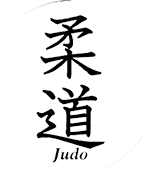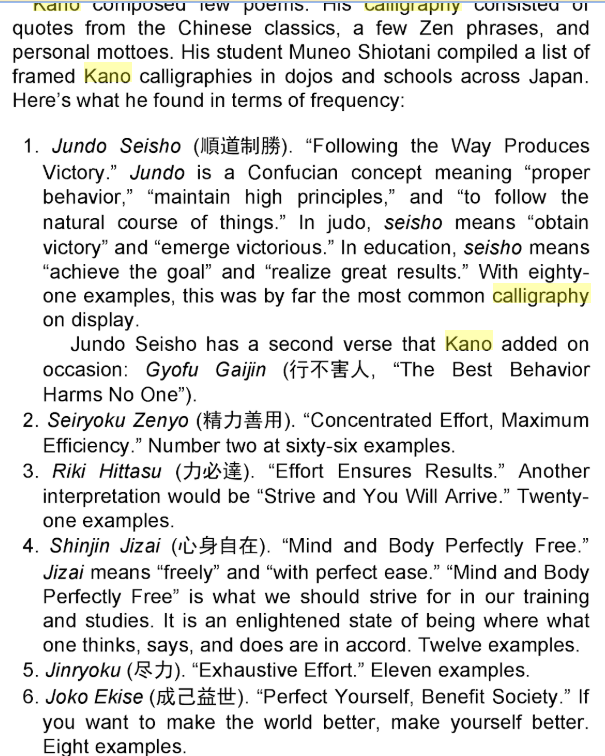PDF documents about Jigoro Kano life, scans of his calligraphies., etc.
http://100yearlegacy.org/english/Kano_Jigoro/pdf/kj_panph_English.pdf
Calligraphy and Philosophy of Prof. Jigoro Kano
http://100yearlegacy.org/english/Kano_Jigoro/Calligraphy/
Some examples:
Jigoro Kano Memorial International Sport Institute wrote:
“順道制勝 (Jyundô-Seïsyô).”
This phrase highlights Kano’s belief that: “regardless of winning or losing, you need to follow the right path and, even if you lose by following this right path, it is more valuable than winning being against the path." (Jigoro Kano, “In the spirit of cultural philosophy of Kodokan Judo”, in Yuko-no Katsudou, Vol.8, No.2, 1922).
常択最善志堅行力 (Kônan/甲南) (collection of Hyogo University of Teacher Education)
Lectura: Tsune ni Saizen wo Erabi Kokorozashi Kataku Tsutomete Okonaü
Significado: Siempre elige el mejor camino y haz un esfuerzo firme y determinante.
成己益世 (Shinkosaï/進乎斎) (owned by Ms Asako Yokoyama)
Reading: Onore wo Nashite Yo wo Ekisu
Meaning: Putting the utmost effort to grow up to be a great person should come first and then contribute to the society
修己治人 (Shinkosaï/進乎斎) (owned by Ms Asako Yokoyama)
Reading: Onore wo Osame te Hito wo Osamu
Meaning: Discipline oneself and govern others
力必達 (Shinkosaï/進乎斎) (owned by Ms Setsuko Otaki)
Reading: Tsutomu-reba Kanarazu Tassu
Meaning: All effort shall pay off to achieve a goal
擇道竭力 (Ki-Issaï/帰一斎) (owned by Mr Michio Tanimoto)
Reading: Michi wo Erabi-te Chikara wo Tsukusu
Meaning: One shall choose his way and do it to the best of his ability
盡己竢成 ” (Ki-Issaï/帰一斎) (owned by Mr Michio Tanimoto)
Reading: Onore wo Tsukushite Naru-wo Matsu
Meaning: Do your best and await success
教育之事天下莫偉焉 一人徳教広加万人 一世化育遠及百世 (Shinkosaï/進乎斎) (owned by Ms Asako Yokoyama)
Reading: Kyoiku no Koto, Tenka Koreyori I-naru wa nashi
Hitori no Tokkyo, Hiroku Ban-nin ni Kuwawari
Isseï no Kaïku Tôku Hyakuseï ni Oyobu
Meaning: Nothing under the sun is greater than education. By educating one person with virtue and sending him/her into the society of his/her generation, we make a contribution by extending a hundred generations to come.
自他共栄 (Shinkosaï/進乎斎) (collection of University of Tsukuba)
Reading: Jita-Kyoei
Meaning: an attention to the mutual prosperity for oneself and others













